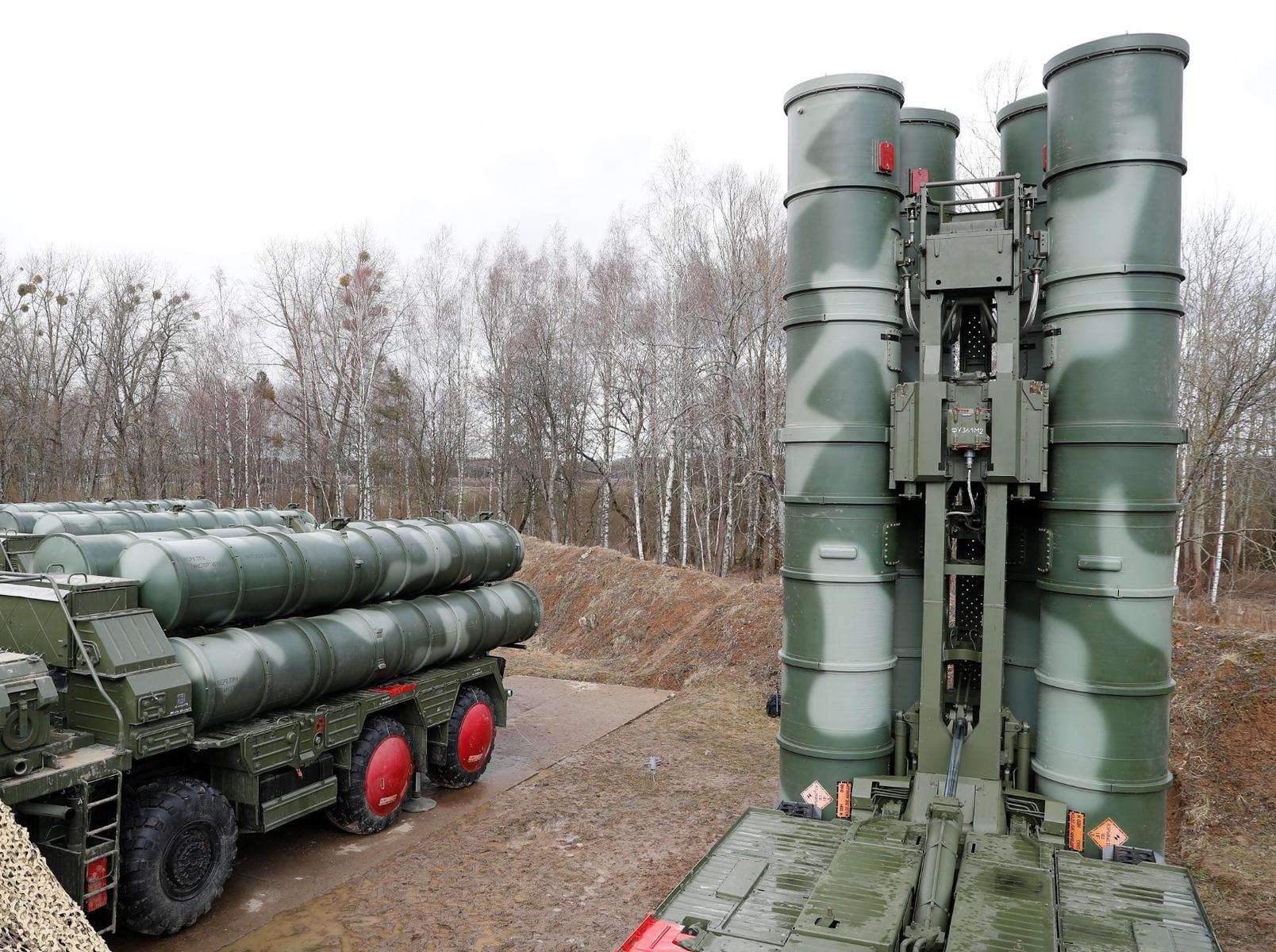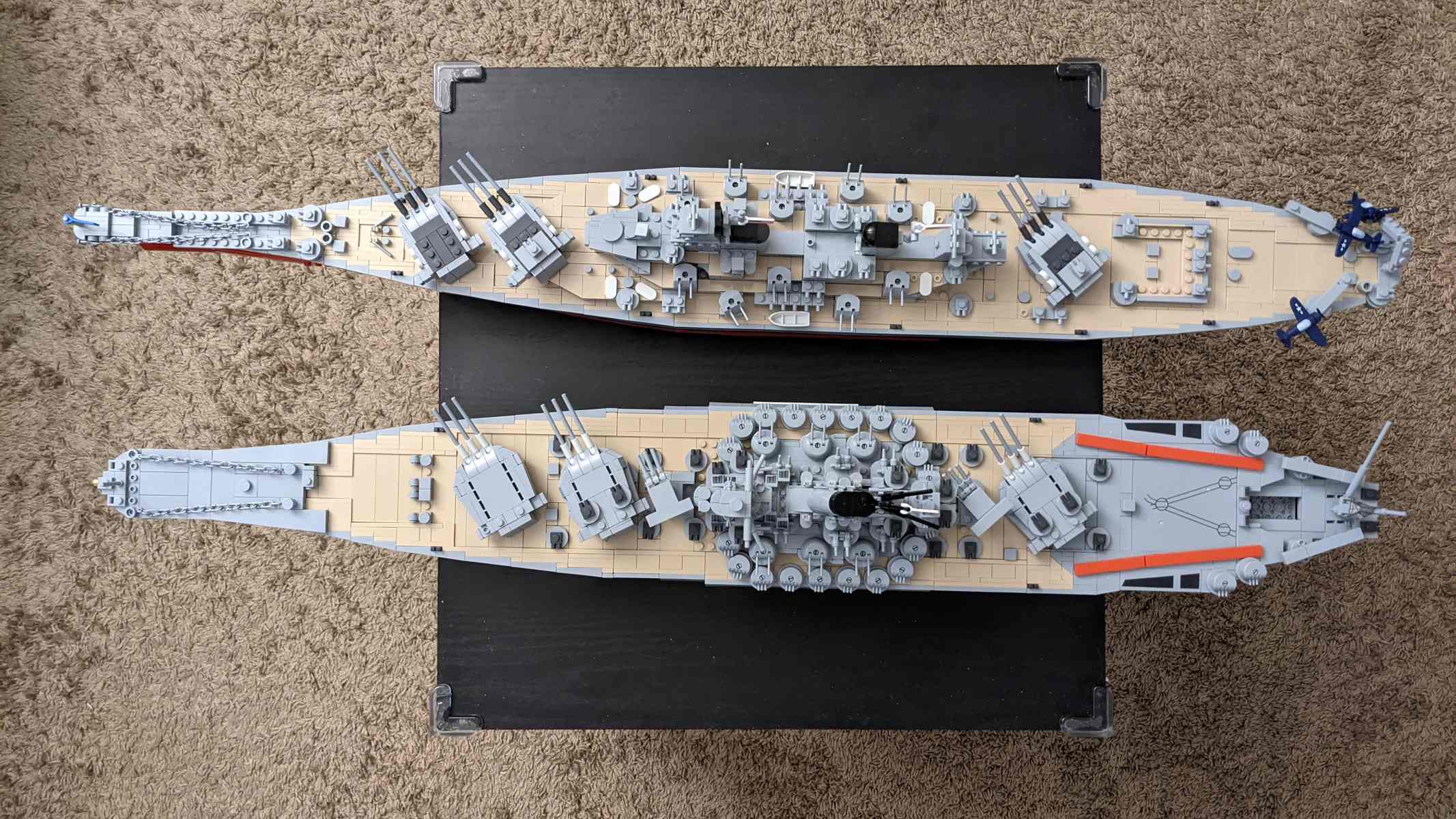Home>World News>Russia’s S-400 Vs America’s Aegis And Patriot: Battle Of The Air Defense Giants!


World News
Russia’s S-400 Vs America’s Aegis And Patriot: Battle Of The Air Defense Giants!
Published: January 20, 2024
Discover the battle between Russia's S-400 and America's Aegis and Patriot in this in-depth analysis. Stay updated with the latest world news on air defense systems.
(Many of the links in this article redirect to a specific reviewed product. Your purchase of these products through affiliate links helps to generate commission for Regretless.com, at no extra cost. Learn more)
Table of Contents
Introduction
In the realm of military defense, the battle for air superiority has been a constant pursuit, driving nations to develop advanced systems capable of protecting their airspace from aerial threats. Two prominent contenders in this high-stakes arena are Russia's S-400 and America's Aegis and Patriot systems. These air defense giants represent the pinnacle of technological innovation, designed to detect, track, and neutralize airborne threats, including ballistic missiles, aircraft, and drones.
The rivalry between these systems mirrors the broader geopolitical tensions and strategic competition between Russia and the United States. As these nations seek to safeguard their territories and interests, the capabilities and effectiveness of their respective air defense systems have become a focal point of analysis and debate.
The S-400, developed by Russia's Almaz-Antey, has garnered widespread attention for its formidable range, precision, and adaptability. Its deployment has not only bolstered Russia's defense capabilities but also influenced global perceptions of air defense technology. On the other hand, the Aegis and Patriot systems, integral components of the United States' defense infrastructure, embody the nation's commitment to maintaining air superiority and protecting its allies.
As we delve into the intricacies of these air defense systems, it becomes evident that the competition extends beyond technological prowess; it encompasses strategic implications, operational considerations, and the ever-present quest for military advantage. By examining the features, capabilities, and operational use of the S-400, Aegis, and Patriot systems, we can gain valuable insights into the evolving dynamics of air defense and the enduring quest for supremacy in the skies.
Overview of Russia's S-400
The S-400 Triumph, developed by Russia's renowned defense manufacturer Almaz-Antey, stands as a testament to the country's commitment to advanced air defense capabilities. This formidable system has earned a reputation as one of the most sophisticated and versatile surface-to-air missile systems in the world, showcasing a blend of cutting-edge technology and strategic adaptability.
At its core, the S-400 is designed to neutralize a wide array of aerial threats, including aircraft, drones, and ballistic missiles, at extended ranges. Its multi-layered defense architecture enables it to engage multiple targets simultaneously, enhancing its effectiveness in complex operational scenarios. With a maximum engagement range of 400 kilometers and the ability to track and engage targets at varying altitudes, the S-400 boasts an impressive operational envelope, making it a formidable deterrent against airborne threats.
One of the defining features of the S-400 is its capability to employ a diverse range of missile types, each tailored to specific engagement scenarios. The system's arsenal includes long-range, medium-range, and short-range missiles, providing operators with the flexibility to adapt to evolving threat profiles. This adaptability is further augmented by the S-400's advanced radar systems, which facilitate precise target tracking and engagement, even in highly dynamic and contested airspace.
Moreover, the S-400's mobility and rapid deployment capabilities add a layer of strategic agility, enabling it to be swiftly repositioned to address emerging threats or support critical defense operations. This mobility, coupled with its robust command and control infrastructure, enhances the system's overall responsiveness and resilience in the face of evolving tactical challenges.
In essence, the S-400 represents a formidable fusion of advanced technology, strategic flexibility, and robust operational capabilities, positioning it as a cornerstone of Russia's air defense strategy. Its deployment has not only bolstered the nation's defense posture but has also reverberated across the global defense landscape, influencing perceptions of air defense technology and reshaping strategic calculations in the pursuit of aerial supremacy.
Overview of America's Aegis and Patriot Systems
The United States has long been at the forefront of air defense technology, exemplified by its formidable Aegis and Patriot systems, which stand as stalwarts of the nation's commitment to safeguarding its airspace and that of its allies. The Aegis system, developed by Lockheed Martin, represents a paradigm of integrated naval defense, designed to provide a multi-layered shield against a spectrum of aerial and ballistic threats. Its versatility extends from defending naval task forces to protecting coastal regions, making it a pivotal component of the United States Navy's defensive capabilities.
Central to the Aegis system is its advanced radar and missile technologies, which enable it to detect and intercept a diverse range of threats, including anti-ship missiles, aircraft, and ballistic missiles. The system's Aegis Ballistic Missile Defense capability further underscores its adaptability, allowing it to engage ballistic threats in both the exo-atmospheric and endo-atmospheric phases of flight, thereby enhancing the overall resilience of naval assets and critical infrastructure.
Complementing the Aegis system is the Patriot air defense system, developed by Raytheon Technologies, which has earned renown for its battlefield-proven effectiveness and adaptability. Deployed by the United States Army and numerous allied nations, the Patriot system serves as a robust shield against a spectrum of aerial threats, ranging from tactical ballistic missiles to enemy aircraft and drones. Its modular design and advanced radar systems enable it to conduct simultaneous engagements, enhancing its capability to counter complex and dynamic airborne threats in diverse operational environments.
The Patriot's versatility is further underscored by its ability to integrate with other air and missile defense assets, amplifying its impact and contributing to a layered defense architecture. This interoperability not only enhances the system's effectiveness but also fosters seamless coordination with allied forces, reinforcing collective defense capabilities and bolstering regional security.
In essence, the Aegis and Patriot systems epitomize the United States' unwavering commitment to air defense excellence, blending cutting-edge technology, adaptability, and interoperability to create a formidable shield against airborne threats. Their operational deployment and strategic significance underscore the pivotal role these systems play in preserving air superiority and safeguarding vital national and allied interests.
Comparison of Capabilities
The comparison of capabilities between Russia's S-400 and America's Aegis and Patriot systems unveils a compelling juxtaposition of technological prowess, operational adaptability, and strategic implications. At the heart of this analysis lies the quest to discern the unique attributes and operational nuances that distinguish each system, shedding light on their respective strengths and limitations.
The S-400 Triumph, with its formidable range of 400 kilometers, stands out as a long-range air defense system capable of engaging multiple targets simultaneously, including aircraft, drones, and ballistic missiles. Its multi-layered defense architecture, coupled with advanced radar systems, enables precise target tracking and engagement, bolstering its effectiveness in complex operational scenarios. The system's adaptability, showcased through its diverse missile arsenal and mobility, underscores its capacity to address evolving threat profiles and swiftly reposition in response to dynamic tactical exigencies. Furthermore, the S-400's robust command and control infrastructure enhances its overall responsiveness and resilience, positioning it as a formidable deterrent against airborne threats.
In contrast, the Aegis and Patriot systems, integral components of the United States' air defense arsenal, embody a blend of cutting-edge technology and operational versatility. The Aegis system, renowned for its integrated naval defense capabilities, leverages advanced radar and missile technologies to detect and intercept a diverse spectrum of threats, including anti-ship missiles, aircraft, and ballistic missiles. Its adaptability is further underscored by the Aegis Ballistic Missile Defense capability, enabling engagements in both exo-atmospheric and endo-atmospheric phases of flight, thereby enhancing the resilience of naval assets and critical infrastructure.
Complementing the Aegis system, the Patriot air defense system stands as a battlefield-proven shield against tactical ballistic missiles, enemy aircraft, and drones. Its modular design and advanced radar systems enable simultaneous engagements, amplifying its capability to counter dynamic airborne threats in diverse operational environments. The system's interoperability with allied air and missile defense assets reinforces collective defense capabilities, contributing to a layered defense architecture that bolsters regional security.
In essence, the comparison of capabilities underscores the distinct strengths and operational nuances of each system. While the S-400 excels in extended-range engagements and strategic adaptability, the Aegis and Patriot systems epitomize the United States' commitment to integrated air and missile defense, blending advanced technology, adaptability, and interoperability to create a formidable shield against airborne threats. This comprehensive assessment illuminates the evolving dynamics of air defense and the enduring pursuit of aerial supremacy in an era defined by strategic competition and technological innovation.
Operational Use and Effectiveness
The operational use and effectiveness of air defense systems are pivotal factors that define their impact on strategic and tactical military operations. In this context, the deployment and performance of Russia's S-400 and America's Aegis and Patriot systems offer profound insights into their operational dynamics and real-world effectiveness.
The S-400 Triumph, with its formidable range and multi-layered defense architecture, has been strategically deployed by Russia to safeguard critical assets, including military installations, population centers, and vital infrastructure. Its operational effectiveness was notably demonstrated in the Syrian conflict, where it played a pivotal role in protecting Russian military bases and allied forces from potential aerial threats. The system's capability to engage multiple targets simultaneously, coupled with its adaptability to varying threat profiles, underscored its operational versatility and effectiveness in contested airspace. Furthermore, the S-400's rapid deployment capabilities and robust command and control infrastructure have enhanced its responsiveness and resilience, positioning it as a formidable deterrent against airborne threats in real-world scenarios.
On the other hand, the Aegis and Patriot systems have been integral to the United States' and its allies' air defense strategies, contributing to a layered defense architecture that spans naval and land-based operations. The operational use of the Aegis system, particularly in safeguarding naval task forces and critical maritime assets, has underscored its effectiveness in countering diverse aerial and ballistic threats. Its adaptability and interoperability have further amplified its impact, fostering seamless coordination with allied forces and bolstering collective defense capabilities.
Similarly, the Patriot system's battlefield-proven effectiveness has been evident in numerous operational contexts, including its deployment by the United States and allied nations to safeguard against tactical ballistic missiles, enemy aircraft, and drones. The system's adaptability, modular design, and advanced radar systems have facilitated its operational use in diverse environments, enhancing its capability to counter dynamic airborne threats and contribute to regional security.
In essence, the operational use and effectiveness of the S-400, Aegis, and Patriot systems have underscored their pivotal roles in safeguarding airspace and critical assets, shaping strategic calculations, and reinforcing the pursuit of air superiority. These systems, through their real-world deployments and demonstrated effectiveness, have not only influenced the evolving dynamics of air defense but have also exemplified the enduring quest for operational excellence in the realm of aerial supremacy.
Conclusion
In conclusion, the juxtaposition of Russia's S-400 and America's Aegis and Patriot systems unveils a compelling narrative of technological innovation, operational adaptability, and strategic implications in the realm of air defense. The S-400 Triumph, emblematic of Russia's commitment to advanced air defense capabilities, has garnered widespread attention for its formidable range, precision, and strategic versatility. Its operational deployment and demonstrated effectiveness in safeguarding critical assets underscore its pivotal role in shaping the dynamics of aerial supremacy.
On the other hand, the Aegis and Patriot systems, integral components of the United States' air defense arsenal, exemplify a blend of cutting-edge technology, adaptability, and interoperability. These systems, deployed across naval and land-based operations, have demonstrated battlefield-proven effectiveness and contributed to a layered defense architecture that bolsters regional security and collective defense capabilities.
The comparison of capabilities between these air defense giants highlights their distinct strengths and operational nuances, underscoring the enduring pursuit of air superiority in an era defined by strategic competition and technological innovation. The operational use of the S-400, Aegis, and Patriot systems, demonstrated in real-world scenarios, has further underscored their pivotal roles in safeguarding airspace, critical assets, and shaping strategic calculations.
As the quest for aerial supremacy continues to evolve, the S-400, Aegis, and Patriot systems stand as testaments to the relentless pursuit of operational excellence and technological innovation in the realm of air defense. Their impact transcends national boundaries, influencing global perceptions of air defense technology and reinforcing the strategic imperative of safeguarding vital interests and assets.
In essence, the competition between these air defense giants extends beyond technological prowess; it encompasses strategic implications, operational considerations, and the enduring quest for military advantage. By delving into the features, capabilities, and operational use of these systems, we gain valuable insights into the evolving dynamics of air defense and the enduring pursuit of supremacy in the skies.














